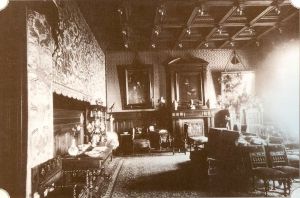The Villa of the Swiss Lord
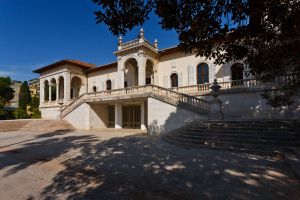
 The events of the villa, located in Corso Cavallotti and surrounded by a vast park, began in 1875, when the wealthy Swiss businessman Michel Louis Ormond, cigar producer and art lover, bought Villa Rambaldi, a small building built by Giovenale Gastaldi senior and surrounded by land planted with citrus and olive trees, to spend the winter months there together with his wife Marie Margherite Renet.
The events of the villa, located in Corso Cavallotti and surrounded by a vast park, began in 1875, when the wealthy Swiss businessman Michel Louis Ormond, cigar producer and art lover, bought Villa Rambaldi, a small building built by Giovenale Gastaldi senior and surrounded by land planted with citrus and olive trees, to spend the winter months there together with his wife Marie Margherite Renet.
A few years after their move to Sanremo, however, Villa Rambaldi was seriously damaged by the earthquake of 23 February 1887.
The ruinous earthquake also gave Mr. Ormond the opportunity to actively engage in providing assistance to the affected populations, so much so that he deserved the Cross of 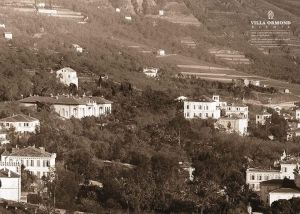 Knight of the Mauritian Order, conferred on him by King Umberto I, while his son Francis received a certificate of public merit from the Minister of the Interior as a reward for his tireless work in favour of the earthquake victims.
Knight of the Mauritian Order, conferred on him by King Umberto I, while his son Francis received a certificate of public merit from the Minister of the Interior as a reward for his tireless work in favour of the earthquake victims.
Having noticed the considerable damage suffered by Villa Rambaldi, the Ormond family decided to build a new residence, moving in the meantime to the nearby Villa Magnolie, better known then as Villa Dufour. The project for the new building, entrusted to the Geneva architect Emile Réverdin, who transferred his Parisian training into a classical and linear layout, was personally supervised by the Ormond couple, who made use of their extensive knowledge in the artistic and architectural field.
After fifteen months of feverish activity, the new villa was officially inaugurated on June 1st 1890 in an elevated position in the frame of the large garden modelled according to the 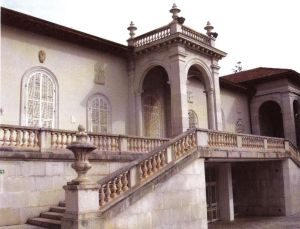 French design of the second half of the nineteenth century, which led to the elimination of the Ligurian terraces and citrus groves to make way for a dense
French design of the second half of the nineteenth century, which led to the elimination of the Ligurian terraces and citrus groves to make way for a dense  network of avenues with exotic plants placed next to olive and citrus trees.
network of avenues with exotic plants placed next to olive and citrus trees.
The park's design takes up a "room" structure with particularly defined plant environments: palm grove, cedar grove, ancient olive grove, Ficus sequence and majestic central scenery inspired by the theme of the Italian garden.
Based on the project by Réverdin and the Ormond family, an extended building was then built, with a single raised floor overlooking a large square reached by numerous avenues and stairways that radiate out from the park.
The building is crossed by a large terrace open at the sides by two Renaissance-style loggias and a monumental pronaos situated at the entrance. Equally sumptuous was the interior with its rich furnishings consisting of Florentine style furniture and polychrome coffered wooden ceilings to decorate the vast halls.
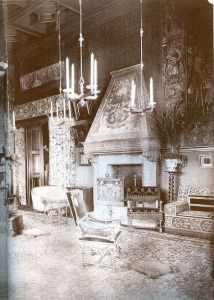 A fireplace from the castle of the Doria family of Dolceacqua was also placed in a large hall, while the decorations on the walls were made by the Ormond family of painters from Geneva, the tapestries made in Genoa and Lyon, copying ancient matrixes, and the fabrics woven in a workshop in Paris.
A fireplace from the castle of the Doria family of Dolceacqua was also placed in a large hall, while the decorations on the walls were made by the Ormond family of painters from Geneva, the tapestries made in Genoa and Lyon, copying ancient matrixes, and the fabrics woven in a workshop in Paris.
The villa was built with stones removed from a quarry in Toulon and adorned with precious historiated glass from the manufacture of Saint Gobain.

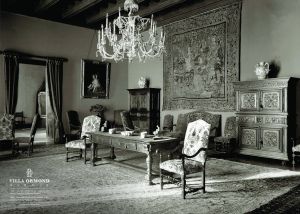 Inside his new home, Michel Louis Ormond also placed an important collection of paintings, silverware and other antique objects, some of which came from the Demidoff sale in Florence.
Inside his new home, Michel Louis Ormond also placed an important collection of paintings, silverware and other antique objects, some of which came from the Demidoff sale in Florence.
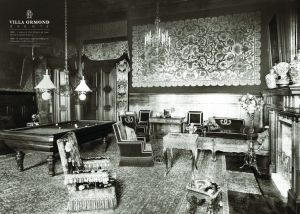

In the years following its inauguration, the villa hosted illustrious personalities such as the Crown Prince of Germany and his family, the Duke of Aosta, Princess Sissi (Elizabeth of Austria) and other members of high society, especially Swiss and French, as well as many artists, including many Swiss painters.
After the marriage of Francis Ormond to Violet Sargent, younger sister of the American painter John Singer Sargent, the villa remained the property of the Swiss family until the death in 1925 of Marie Marguerite Renet, who had been widowed in the meantime.
In February 1928, in order to finally provide the town with a vast public garden park that would be an indispensable attraction for tourists who went on holiday to Sanremo, the podestà Pietro Agosti decided to take over the building and the annexed garden for the sum of four million.
This sum, according to a clause in the contract stipulated with the Casino's concessionaire, would be held by the latter in twelve bimonthly instalments from the amount of the rent of the Casino itself and then paid, with interest at 1% more than that charged by the Bank of Italy for the advances on the securities, into the Town Hall coffers.
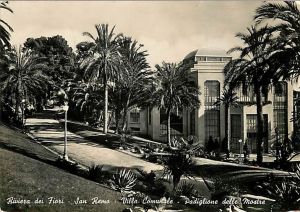
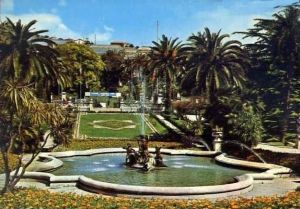 The Municipality of Sanremo then had a pavilion built there for exhibitions and made the large garden accessible to the public, at the bottom of which was placed the large fountain designed by Agosti himself.
The Municipality of Sanremo then had a pavilion built there for exhibitions and made the large garden accessible to the public, at the bottom of which was placed the large fountain designed by Agosti himself.
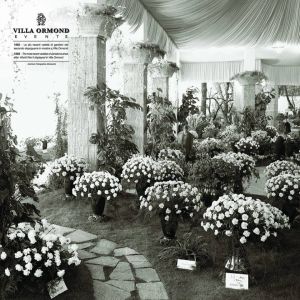 In particular, the space behind the villa was often used as a "winter garden" in order to host prestigious events and various award ceremonies.
In particular, the space behind the villa was often used as a "winter garden" in order to host prestigious events and various award ceremonies.
Subsequently the villa was also the seat of the Court of Sanremo, while from 1936 until the early seventies the villa and the park have hosted numerous 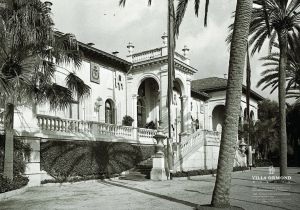 flower exhibitions of international level. Currently the villa, which is still the venue of important exhibitions and conferences, houses the offices of the International Institute of Humanitarian Law, a private, independent and non-profit organization founded in Sanremo in 1970, whose primary objective is to promote the application, development and dissemination of the principles of humanitarian law, while making a concrete contribution to the protection and respect for human rights in the world.
flower exhibitions of international level. Currently the villa, which is still the venue of important exhibitions and conferences, houses the offices of the International Institute of Humanitarian Law, a private, independent and non-profit organization founded in Sanremo in 1970, whose primary objective is to promote the application, development and dissemination of the principles of humanitarian law, while making a concrete contribution to the protection and respect for human rights in the world.

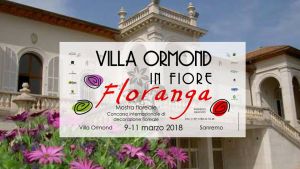 The institute also organises courses, seminars, meetings and working meetings at its headquarters attended by diplomats, scholars, officials, government experts and officials of international bodies to discuss and confront the major problems that afflict humanity, such as the wars still ongoing in many countries, the forced exodus of entire populations and natural disasters.
The institute also organises courses, seminars, meetings and working meetings at its headquarters attended by diplomats, scholars, officials, government experts and officials of international bodies to discuss and confront the major problems that afflict humanity, such as the wars still ongoing in many countries, the forced exodus of entire populations and natural disasters.
The Maturitanian body, which has a liaison office with other international humanitarian organisations in Geneva, also works actively with public and private institutions involved in humanitarian actions and with many universities and academies around the world.
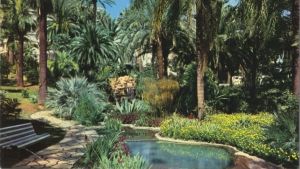
 At the villa, an area of the park has been designed in Japanese style, in memory of the twinning between the cities of Sanremo and Atami, with numerous species belonging to the typical Japanese flora that gives the whole garden an evocative oriental imprint, while in the lower part of the park, south of Corso Cavallotti, there is a statue erected in memory of the Mexican poet, historian and politician Ignacio Manuel Altamirano, who died in Sanremo in 1893, and a bronze bust of the King of Montenegro Nicola I, made by the Turin sculptor Pietro Canonica on order of the daughter of the Montenegrin sovereign, the Queen of Italy Elena di Savoia.
At the villa, an area of the park has been designed in Japanese style, in memory of the twinning between the cities of Sanremo and Atami, with numerous species belonging to the typical Japanese flora that gives the whole garden an evocative oriental imprint, while in the lower part of the park, south of Corso Cavallotti, there is a statue erected in memory of the Mexican poet, historian and politician Ignacio Manuel Altamirano, who died in Sanremo in 1893, and a bronze bust of the King of Montenegro Nicola I, made by the Turin sculptor Pietro Canonica on order of the daughter of the Montenegrin sovereign, the Queen of Italy Elena di Savoia.
(Sources: Grandi Giardini Italiani S.r.l.; photos from the Sanremo Group History and Traditions on Facebook and sources WEB)
The National Floriculture Exhibition at Villa Ormond in 1934






